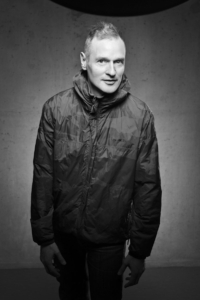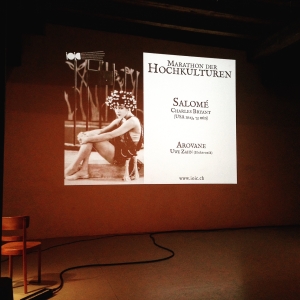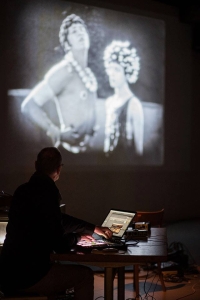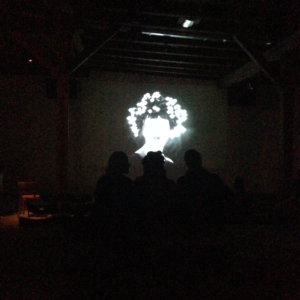Arovane

Arovane: Salomé
„Back in 2015 I was asked by Dominik Grenzler (EndTitles-founder) to compose a soundtrack for a silent film. The festival took place in Zurich. I had to choose from a couple of silent films and I liked Salomé – a film adaption of the Oscar Wilde play of the same name (1923), directed by Charles Bryant. The play itself is a loose retelling of the biblical story of King Herod and his execution of John the baptist (here, as in Wilde’s play, called Jokaanan) at the request of Herod’s stepdaughter, Salomé, whom he lusts after.* (*Wikipedia)
I watched the film in my studio and improvised musical themes to it. The film is much focused on atmospheres, so i placed soundscapes and looped noises accompanied by the sound of a Blüthner piano (physical modelling piano). Ableton live was used for the arrangement and the mixing process.
For the live performance I used the arrangements to improvise, with the piano, sounds to the story.
Enjoy!“
Berlin, Arovane
Meeting the artist. An Interview.



On a sunny day in Berlin, Dominik met Uwe Zahn aka Arovane to talk about his new album «Salomé».
ET: The recording for Salomé was made in December 2015 during the Zurich Silent-Film-Festival. Do you see it as more of a Soundtrack or rather as a live-recording?
UZ: Rather a bit of both. On one hand it is a soundtrack, as I composed the sound-structures for the film in a studio and on the other hand a live recording, since I integrated part of the improvisation during the performance into the production. Hence, a mix of both .
ET: You divided the album into four parts. Salome works on its own as a complete work as well as broken into its single pieces. The dramaturgy and dynamic stay intact. Are you trying to give the listeners another soundtrack on top, a way of creating images in their head without seeing the film?
UZ: Well, the pictures will of course develop in your mind even without seeing the film. It lies within the listener how they want to translate my work and in what order. The sounds, the tone sequences and the dramaturgy were composed while I saw the film at the Festival as mentioned above. For me, parts of the composition is intimitaly linked to certain scenes in the film.
ET: What was your instrumental approach for Salomé?
UZ: I can fall back on a huge pool of sound and sound structures. Seeing the film gave me very clear visions of sounds. Single sounds were then set to certain scenes and accompanied by the sound of a grand piano.
During the live performance, I had a framework of set sounds in combination with an improvisation on the Blüthner grand piano (physical modelling synthesis).
For Salome I worked with macrostructures. I arranged single soundblocks or clusters then adjusted them using a sound-moulding software.
In the second part you can hear a theme played with the Blüthner grand piano in combination with a harp and glockenspiel. An ascending sound sequence which I composed as a theme for the film’s key scenes.
In the third part I combined electro-accoustic sound elements combined with melodic compositions.
At the beginning of the fourth part you can hear a second theme and a sound structure which references Salomé’s unrequited love to Jochanaan and the resulting revenge. At the end you hear the ticking of a great grandfather clock slowly transforming into a vocoder-like synthesizer-sound.
ET: Best loved hardware vs. Best loved software?
UZ: Well, both play a huge role in my productions. Thus I would not say hardware vs software but rather hardware with software.
The main instruments I used in this production (as hardware) were the seaboard rise 49 by Roli, which offers new playing techniques and a multidimensional sound control, and also the grand piano by Blüthner (software/physical modelling).
The complete work was arranged and recorded with a computer, a digital audio workstation – Ableton Live and a 24 channel analogue mixing board by Tascam.
ET: Thank you, Uwe.
Arovane is Uwe Zahn, a Berlin based electronic musician and sound designer. He is best known the juxtaposition of warm melodies with meticulously processed beat work. His most notable albums and EPs were released by City Centre Offices (Ulrich Schnauss, Porn Sword Tobacco) and DIN (Pole, Monolake) between 2000-2004. Zahn’s previous album ‚Lilies‘ (2004) featured the closing song „good bye forever“. It seemed a not so cryptically titled exit from all things Arovane. But Zahn’s been quietly creating music during this self-induced hibernation and has reemerged almost as if no time had passed.
Arovane’s sound can be characterized as ethereal, intellectually melodic, organic, warm and ambient yet technically involved with structured, often heavy, breakbeat and hip hop influenced beats. It is richly layered with synths and textured distortions and focuses more on generating a melancholy nostalgic feeling than 4-on-the-floor dance beats. The tempos are midrange and Arovane has been labeled as IDM by many.
Although the melodic richness remains intact, the resulting sound from the Arovane and Phonem collaboration Aer (Valid) is perhaps more robotic and cold than what could be considered typical Arovane and harkens back to some facets of Arovanes early works, such as Icol Diston.
Arovane can possibly be compared to a blend between the robotic glitch sound of early Autechre and the expansive open synth-laden fields of Boards of Canada. Zahn and his music are often referred to as being melodically advanced.
Nedjev is a side project by Zahn.
